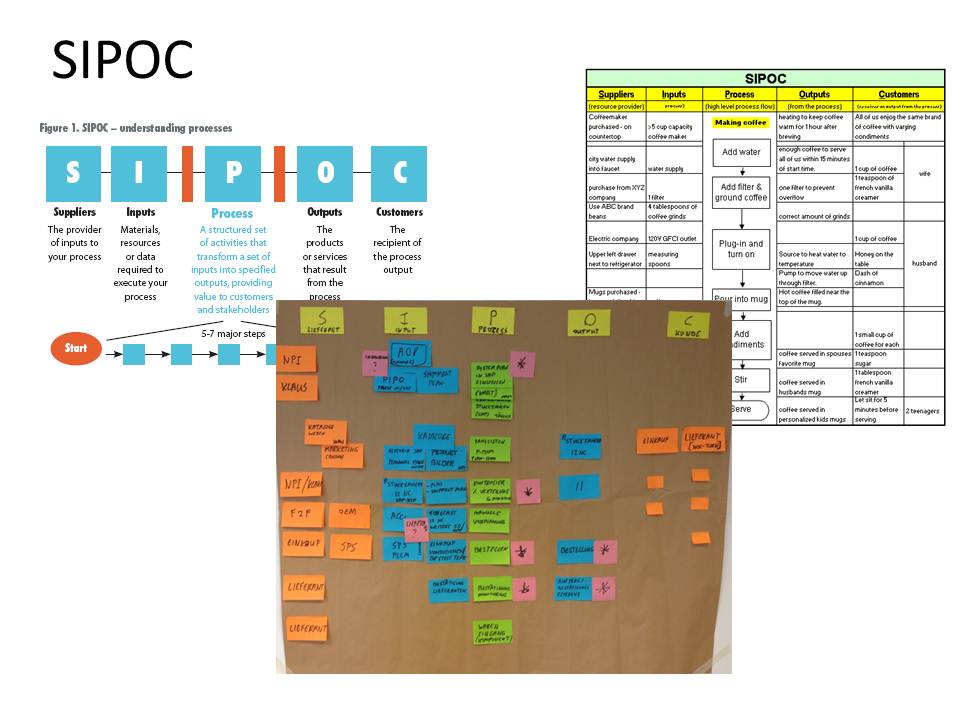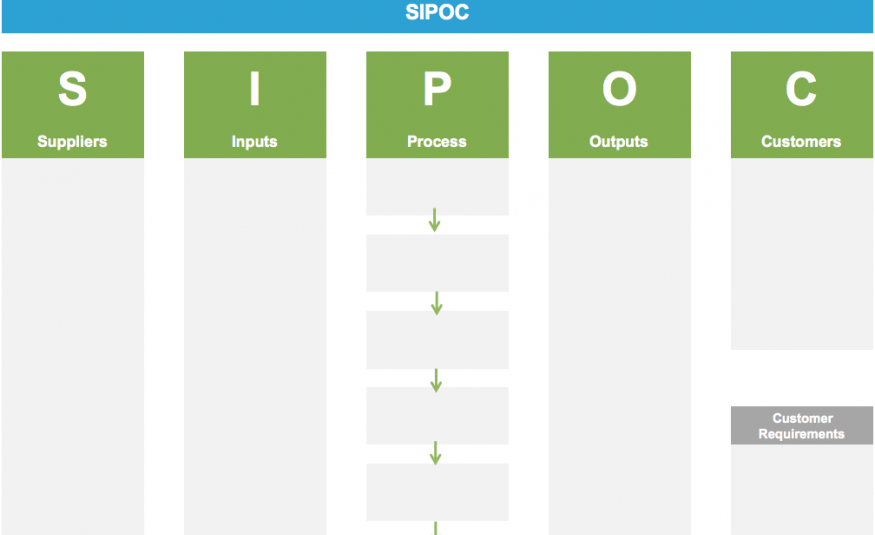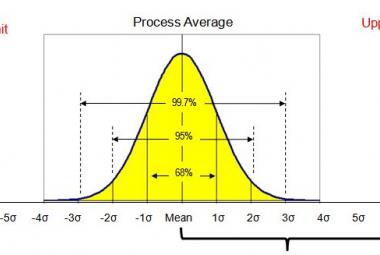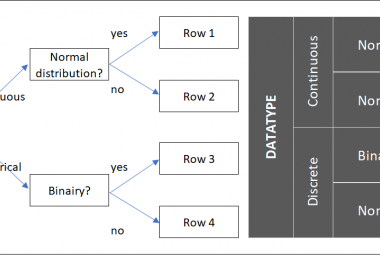The SIPOC is a visual rendering of Deming´s System Model (Scholtes, 1998), a Model that is used to visualize the complexity of a system, where the word system is defined as a combination of processes, methods and employees, who work together towards a common target. The goal of the SIPOC – and Systems Thinking- is to visualize the patterns in a system, by looking at it from a whole, instead of from different pieces like departments or specific processes (Senge, 1990).
The value the SIPOC ads compared to the Process map or a Value Stream Map is that not only tasks or production steps are visualizes, but also the communication complexity between different departments or functions.
The next step after building the SIPOC would be to reduce these complexities, which will lead to higher effectiveness and efficiency in all its processes (Morieux & Tollman, 2014). This is why the SIPOC can play an important role in improvement activities, like Kaizen events.
SIPOC´s can have different forms, as can be seen in the picture below. Personally, I always build the SIPOC with Post-it´s on the first day of a Kaizen event. The letters SIPOC stand for Supplier, Input, Process, Output and Customer which will be described in the following paragraphs. However, a SIPOC always starts with defining the goal of the system (Scholtes, 1998).

THE GOAL of the system answers the question which advantage or possibilities customers get, by working with the system (Scholtes, 1998). The goal should therefore describe the needs of the customers which are served by the system. Ideally, the goal would be something unselfish and serving, which makes the tasks defined in the system worthwhile doing for the people who work in the system.
When the goal is defined, one can start with the SIPOC itself, starting on the side of the CUSTOMERS. The only way to measure whether or not a system is functioning well, is to know what the customers are demanding from that system. One system can have multiple customers; customers can be both internally as well as externally and can be represented by an individual or a group. This depends on what aggregation level the SIPOC is defined.
THE OUTPUT is the third step in building the SIPOC and describes the output the system creates, to serve the customers defined in the previous step. In defining this part, discussing the feedback loop is usually interesting. How do the people in the system know that their output is satisfying to the customer? How often and how soon after the output is produced is the feedback given? Information gathering is an important part of the system. Scholte describes two questions one should always ask the customer: ´what are you not getting from us that you need? ´ And, ´what are you getting form us that you do not need? ´
The next step describes the definition of PROCESSES in the system. What are the key steps the system performs to produce the output the customer demands? This demarcation can help giving direction towards future improvement activities.
Because the processes in the SIPOC are directly linked to customer demand, it is necessary to have Key Performance Indicators (KPI) to measure if the output still meets the customer´s standards. Feedback loops between teams or departments within the system, to discuss KPI´s and Feedback from customers, can be initiated by using the communication cell.
After defining how the system produces, one can define the system INPUT and after that the SUPPLIERS. For every defined process step, there are different materials-, information- or service needs which should be defined in these steps.
Just like on the customer side, the Supplier can be an individual or a group and internal or external. Improving the supplier side of the system is important, while defects or delayed deliveries can influence the processes and the output of the system directly (Scholtes, 1998).
Systems are the reason why employees do what they do, usually to fill a gap in the system (Senge, 1990; Morieuy & Tollman, 2014; Scholtes, 1998). The SIPOC helps to create insight in the complexity of a system, after which the system can be improved with the goal of smoothening the flow from suppliers to customers.
By building in regular feedback loops between different stakeholders of the system, with for example communication cells, not only the efficiency of the system can be improved, but also the effectiveness. The SIPOC is therefore a valuable management tool which can be used in Kaizen events or other improvement activities.
Continue reading:
REFERENCES:
Morieux Y., Tollman, P., 2014, Six Simple Rules – How to Manage Complexity without getting Complicated, Boston: Harvard Business Review Press
Senge, P.M., 1990, The Fifth Discipline – The Art & Practice of a Learning Organization, New York: Doubleday (summary)
Scholtes, P.R., 1998, The Leadership Handbook – Making Things Happen, Getting Things Done, New York: McGraw-Hill












